
 |
Helios Overture, Carl Nielsen |
Pieces
|
The Helios Overture was written by Carl Nielsen during a holiday spent with his wife in Athens in January, 1903. Nielsen was inspired by the sun and warmth of the south which is fully apparent in this overture named after the Greek god of the sun. The music poetically depicts the sun over the Aegean Sea described in the score as “Tranquility and darkness — then the sun comes out with a joyous, exultant song. It traces its golden arc and sings peacefully back into the sea”. The overture is orchestrated for 3 flutes, 2 oboes, 2 clarinets in A, 2 bassoons, 4 horns in F, 3 trumpets in C, 3 trombones, tuba, timpani, and strings. |
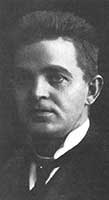 |
Carl Nielsen is probably Denmark’s greatest composer. Known for his six symphonies, the first was written when he was 25 years old. Like Sibelius, he initially composed in a late Romantic style. In the 20th century he increasingly adopted a more modern musical language, although his music always remained melodic and approachable. Use the player to listen to Helios Overture as you follow the analysis. |
Form of the Helios OvertureThe work starts with an Andante tranquillo passage that features horn echoes over a long pedal point in the cellos and basses. |
|
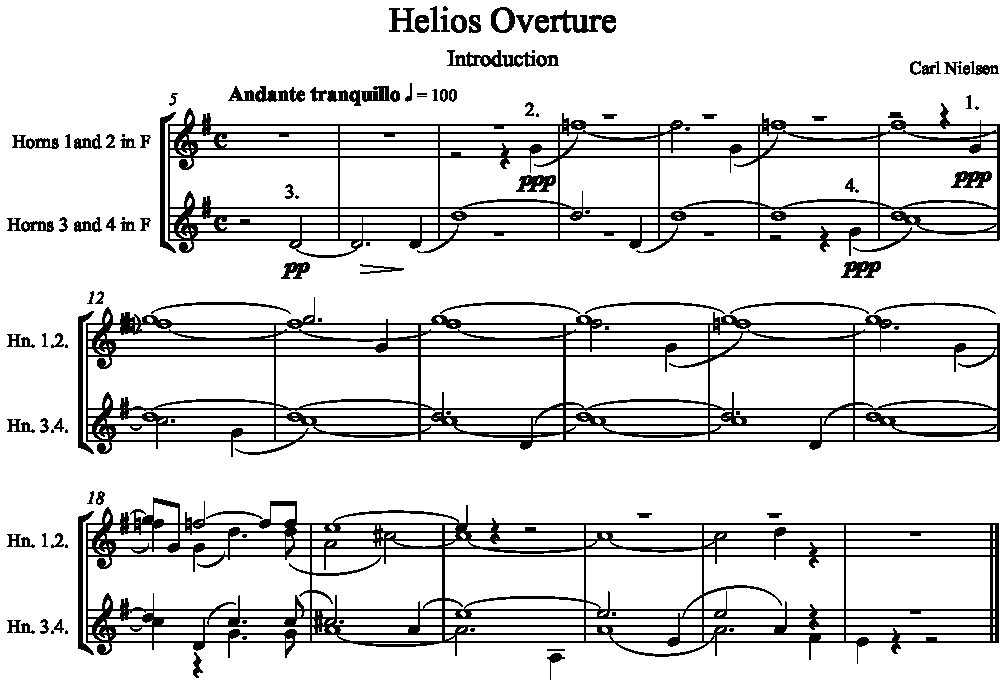 |
A running eighth note passage begins in the violas, is picked up by the second violins, and then becomes a melody in the first violins, with solo woodwind and horn doublings. The melody gradually builds to a climax point, and the 4 horns re-enter with a triumphant melody based on their opening slurs. First violins and flute continue the running eighth notes as a countermelody, accompanied by chords in the strings and woodwinds. As the passage draws to a close, the 3 trumpets enter with fanfares that take us into the next section of the work. |
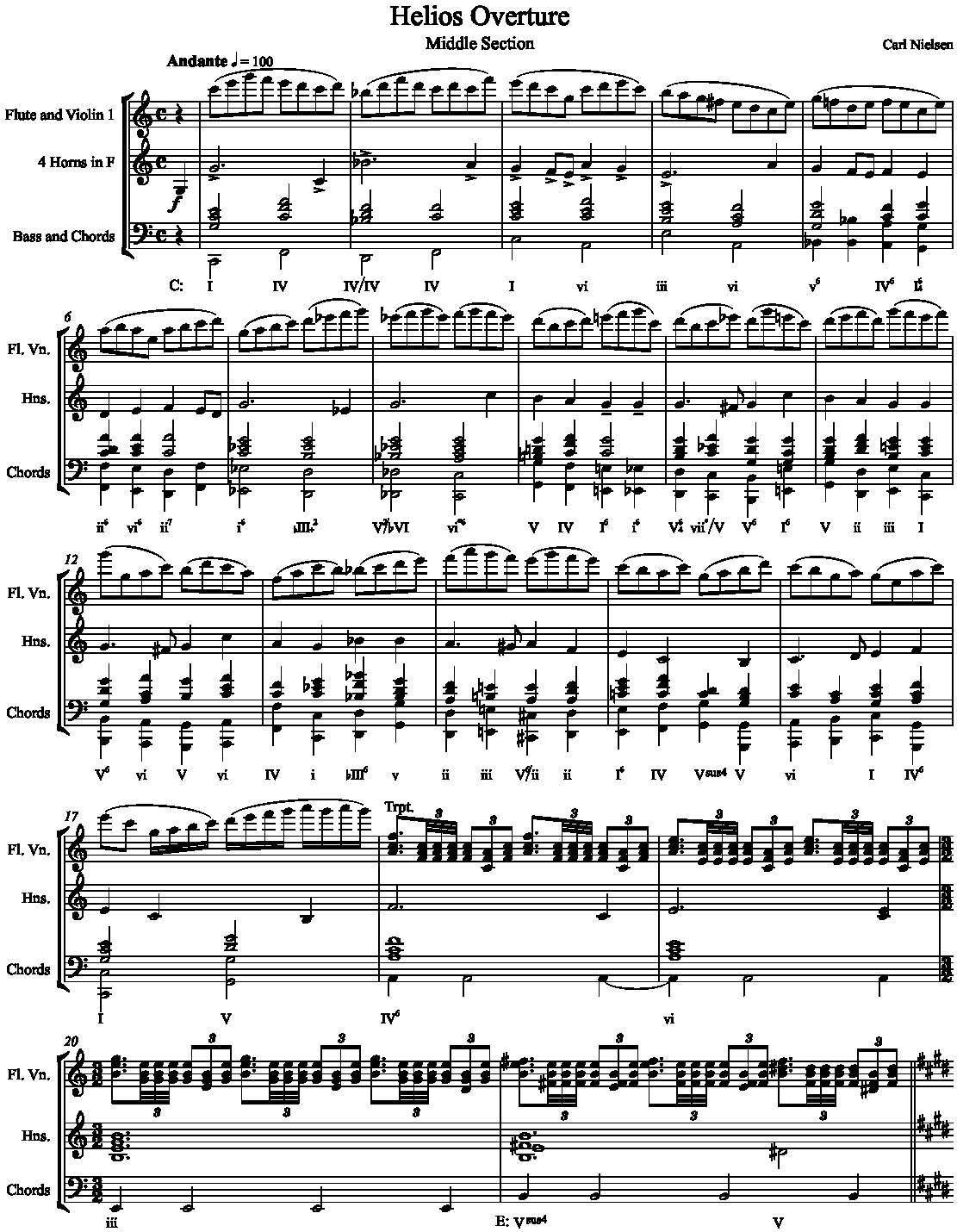 |
Allegro ma no troppo, in cut time and in the key of E Major. The main melody is played by all violins in octaves with some reinforcement from trumpets. Woodwinds and horns play triplets against the duple rhythm of the melody. |
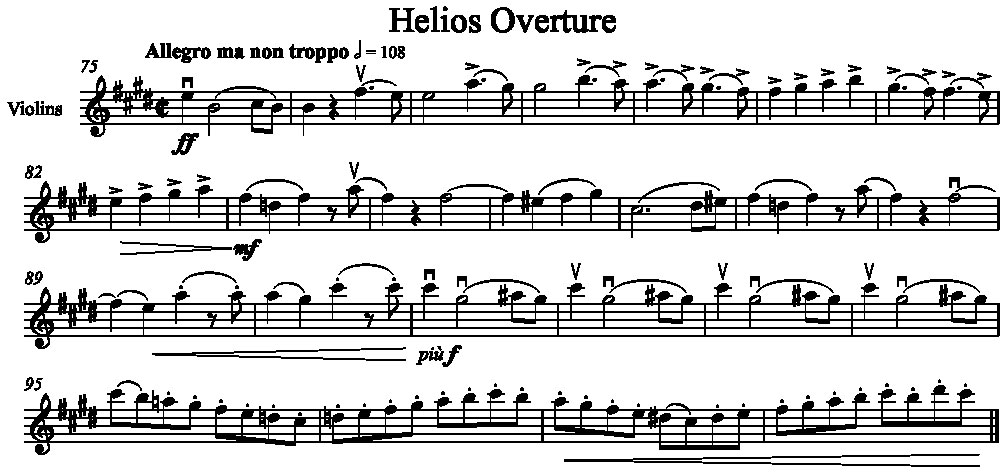 |
The second theme is first stated in the cello section, and repeated by flute and oboe, violin 1, then oboe and bassoon. This is a great example of sequential development, highlighted by key interval changes. The second theme is accompanied by pizzicato octaves strings and falling fourth intervals in woodwinds and strings. Gradually a “horn fifth” idea is introduced and then used to build to the climax of this section. |
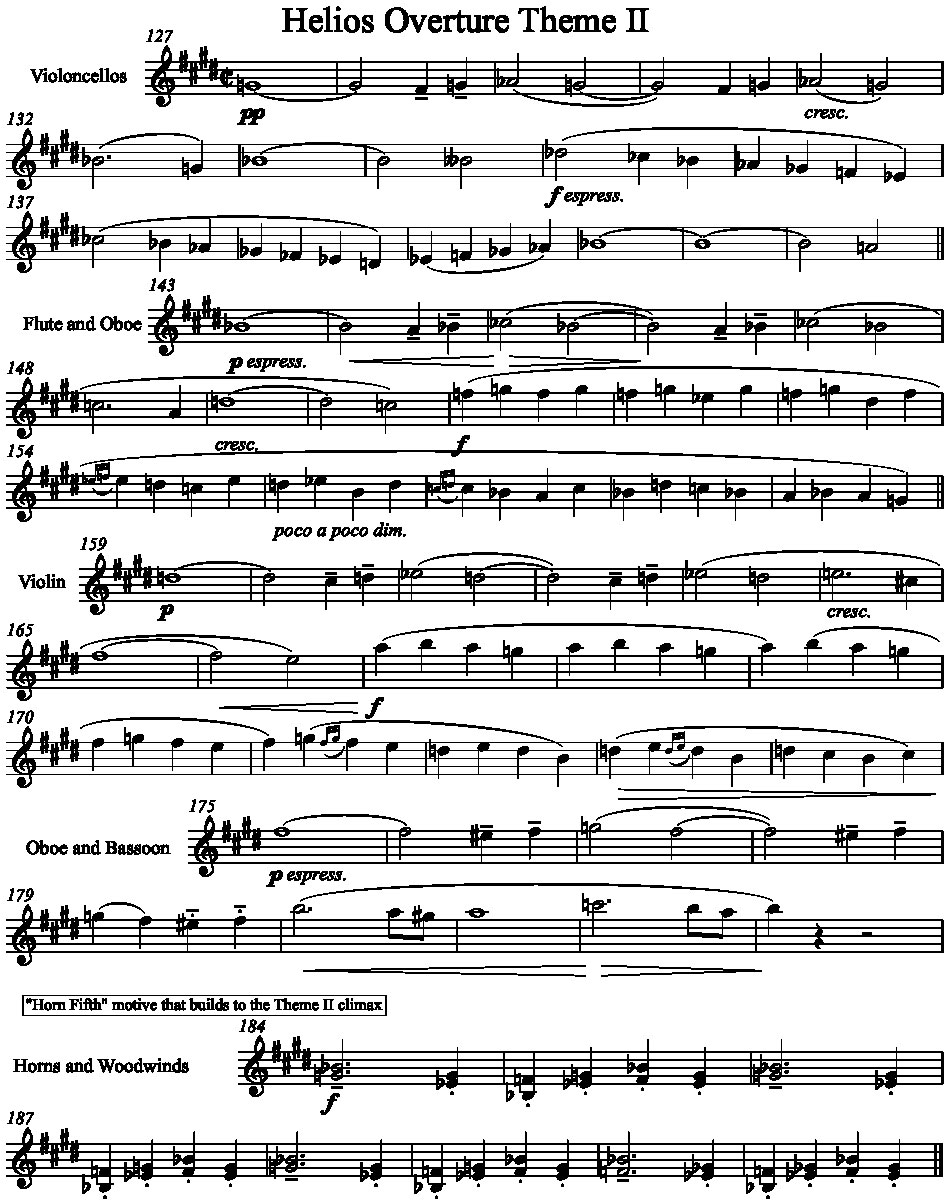 |
The second theme group reaches a climax point capped by a double cadence, plagal followed by perfect authentic. Some fanfare figures in the brass section leads to the start of a fugue in the string section. |
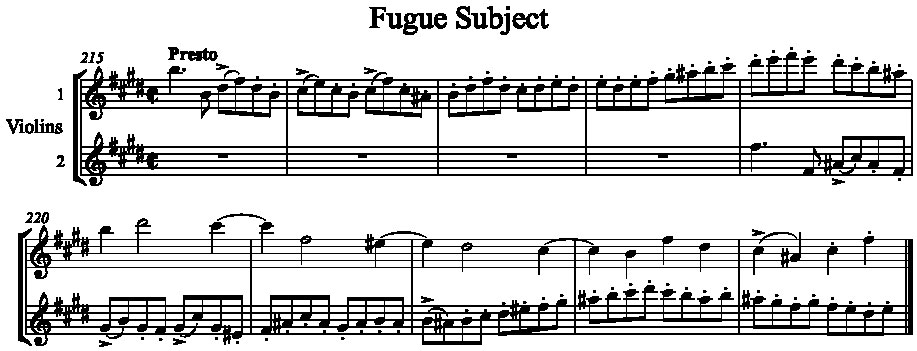 |
Later, the fugue becomes a double fugue, the second fugue stated in the brass section. |
 |
At the finish of the fugue, there is a restatement of the second theme in the full orchestra complete with its double cadence. Then a long descending chromatic passage simulates a sunset. A flute and clarinet leads to a final coda passage featuring two solo horns and accompanied by eighth note figures in the violas and a C and G pedal point in the cellos. |
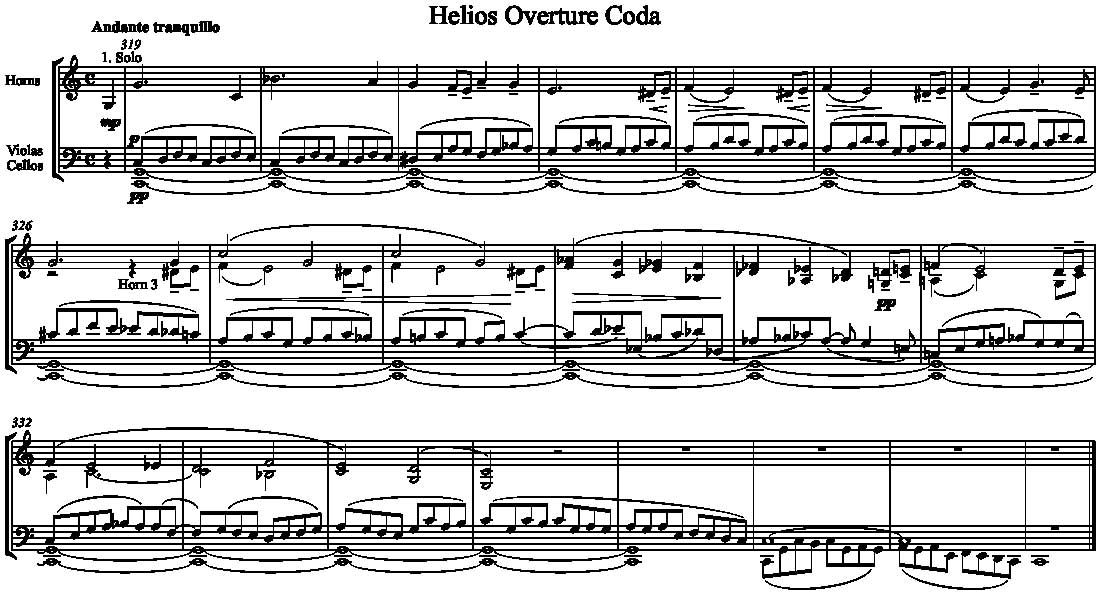 |
Significance of the WorkHelios Overture is a great example of the Romantic era concert overture genre. Its depiction of nature is typical of the Scandinavian composers of that era. The orchestration has lyrical and dynamic brass writing, sophisticated effects with tremolos and trills in the strings and woodwinds, and an effective use of dynamics. It uses the harmonic and rhythmic language of the late romantic era in its chromatic mixture of keys and conflicts between duple and triple rhythms. |